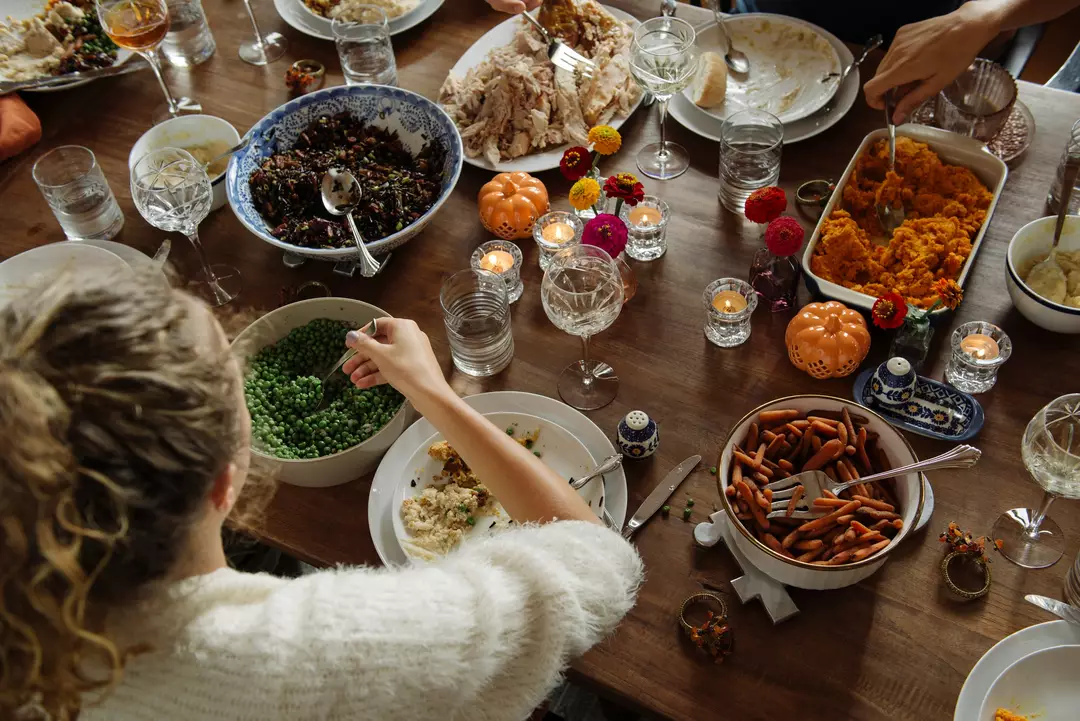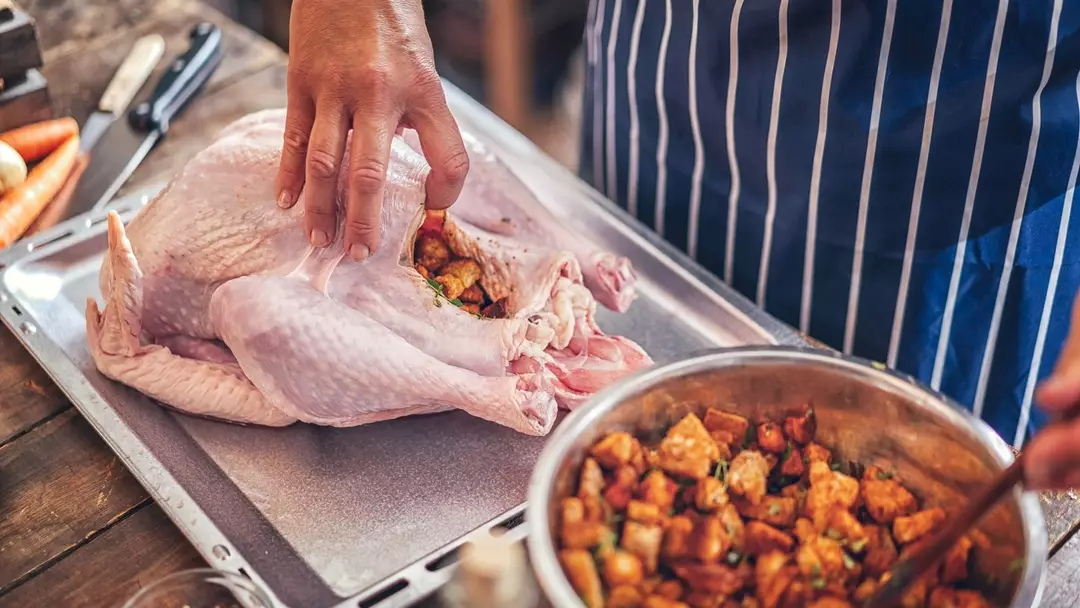Cooking a turkey is an essential part of Thanksgiving, so it’s important not to spoil it by stuffing the bird.
If your turkey isn’t one of the lucky ones spared by a presidential pardon, then it’s likely destined for your dining table this year.
Rest assured that your Thanksgiving feast will be a success… unless you’re planning to add stuffing to the bird.
You might be curious as to why this is an issue, as you’ve probably encountered every turkey cooking tip available. However, a chef has pointed out that stuffing a turkey is a culinary misstep for multiple reasons.
Taylor Ann Spencer, Delish’s food editor and chef, outlined her reasons for recommending against stuffing your turkey this year.
“But while I’m typically a big fan of holiday traditions, this is one that I will NEVER participate in,” she emphasizes. The use of all capitals for “never” underscores the seriousness of her advice.

Taylor explains in her article for Delish that inserting stuffing into poultry, such as a turkey, increases its density. This results in a longer cooking time to reach the correct temperature when the bird has something inside it.
Stuffing with light items like cheese or thin ham is generally acceptable. However, filling the bird with dense sage stuffing presents a different challenge.
“Between the density of the stuffing and the fact that the hot air can no longer circulate through the turkey to cook it from all sides, you’re looking at a SIGNIFICANT increase in cooking time. I’m talking an extra hour,” she notes.
Dry, overcooked meat is not desirable, particularly when hosting a Thanksgiving gathering where guests might be critiquing the meal. It’s wise to avoid unnecessary risks.
One potential pitfall of stuffing your turkey is that it might become dry, complicating efforts to cook it evenly due to its increased density.
Taylor elaborates: “See, because the stuffing has been inserted into the center of the turkey when the turkey is still raw, it’s critical that the center of that stuffing reaches 165° in order to be safe for consumption.
“And by the time that happens, the turkey surrounding it will be wildly overcooked. I’m talking 40° over the recommended temperature.”

If you thought that stuffing your turkey would make it moist, think again. According to Taylor, it doesn’t just add moisture; it transforms the stuffing into a ‘soggy’ mess.
Nobody desires soggy stuffing for Thanksgiving.
“When you bake a pan of stuffing in the oven, you get this browned, crisp top that goes wonderfully with the soft, steaming (not dry!) interior of the stuffing. That textural contrast is essential to a great stuffing for me,” she states.
“But when you bake the stuffing inside the turkey, it steams completely, so you don’t get any browning or crispness anywhere. Instead, you’re just left with a lump of soggy bread mush.”
For those looking to prepare a delicious turkey and stuffing for Thanksgiving, the professional chef shares her cooking secrets.
Instead of stuffing the bird, she advises baking the stuffing separately in a pan and allowing the turkey to cook on its own. Cover the stuffing until the last ten minutes of baking to achieve a browned top.
For those who desire that turkey flavor in their stuffing, Taylor suggests basting it with the turkey’s cooking juices once both dishes have been fully cooked.

